Spotlight on Safety
At Nexus Engineering Group, we are committed to maintaining a culture that values the safety and health of every employee, every client, and ultimately our environment. Read our safety blog, Spotlight on Safety, that brings you tips, reminders and important safety information while at work and at home.

Safety culture is a mentality that puts safety above economic benefits, time savings and personal comfort. It emphasizes the importance of human life and builds the integrity of Nexus by demonstrating our willingness to stand up to unsafe practices.
There are 3 critical relationships in a safety culture.
Peer to Peer
Every person looks out for their team members, regardless of position or department, and respectfully brings safety issues to attention.
Employee to Supervisor
Supervisors lead with a safety mindset and foster a culture of safety while also explaining what is appropriate within the bounds of a project scope.
Company to Client
As a company, we deliver our standard of care by complying with industry standards and codes and living up to our safety values. In cases where our client’s standards differ, we have a duty to bring this to their attention.

Tank overfills are a major concern to the petroleum industry. Overfill incidents can lead to a catastrophic loss of assets, damage to the environment, injuries, and in the worst case, fatalities. As a response to this, the petroleum industry has come together to create the API Standard 2350: “Overfill Protection for Storage Tanks in Petroleum Facilities.”
API 2350 provides guidelines and requirements for implementing effective overfill protection systems. The standard covers aspects such as tank design, level measurement, alarms, emergency shutdown systems, personnel training, and regular inspections. Read on to learn how you can minimize the risk of overfill incidents and protect the well-being of your facilities and your team.
Stay Updated on Safety Standard Revisions:
Regularly review and understand the latest safety standards related to overfill prevention. Stay informed about guidelines provided by authoritative bodies like the American Petroleum Institute (API) or the International Electrotechnical Commission (IEC). By staying up-to-date, you can ensure your safety measures align with industry regulations.
Conduct Comprehensive Risk Assessments:
Perform thorough risk assessments to identify potential overfill hazards in your processes, facilities, and equipment. Evaluate storage tanks, pipelines, and transfer systems to pinpoint vulnerabilities. Engage subject matter experts to gain valuable insights and recommendations for minimizing risks and enhancing safety protocols.
Install Reliable Overfill Protection Systems:
Invest in robust overfill protection systems designed to meet your industry’s specific requirements. These systems can include automated level sensors, alarms, and emergency shutdown mechanisms. Ensure proper installation, regular maintenance, and routine testing to guarantee their effectiveness.
Provide Adequate Training and Education:
Implement comprehensive training programs for personnel involved in overfill-prone processes. Educate them on recognizing warning signs, operating safety devices, and responding during overfill emergencies. Reinforce the importance of adhering to safety protocols at all times.
Establish Clear Communication Channels:
Establish clear communication channels between operators, supervisors, and maintenance teams. This ensures effective coordination during normal operations and emergency situations. Implement procedures for promptly reporting potential overfill risks, utilizing incident reporting systems. Foster an open safety culture where all employees feel comfortable sharing safety concerns.
Regularly Inspect and Maintain Equipment:
Schedule regular inspections and maintenance of equipment associated with overfill prevention. Thoroughly check for corrosion, leaks, or faulty components that could compromise safety. Implement preventive maintenance programs and maintain detailed records of inspections, repairs, and replacements to ensure ongoing equipment reliability.
Monitor and Analyze Data:
Utilize modern technology to monitor and analyze data related to overfill prevention. Implement real-time monitoring systems to track fluid levels, pressure, temperature, and other critical parameters. Leverage data analytics to identify trends, predict potential overfill risks, and proactively prevent incidents.
Foster Continuous Improvement in Safety Practices:
Promote a culture of continuous improvement in safety practices. Conduct regular safety audits and engage in discussions with employees to gather feedback and suggestions. Implement lessons learned from past incidents and share them throughout the organization. Emphasize personal responsibility and accountability for safety at all levels.
By following these essential steps, you can strengthen safety practices, mitigate overfill risks, and safeguard your team. Not sure where to start? The experts at Nexus can help you analyze your risk and develop an overfill prevention system that meets the API 2350 requirements and needs of your business.

As the temperature rises and summer sets in, it’s important to be mindful of the potential risks associated with excessive heat. Heat-related illnesses, such as heat exhaustion and heatstroke, can be debilitating and even life-threatening. It’s crucial to stay cool, hydrated, and aware of the signs of overheating. By following these recommendations, you can protect yourself and others from the adverse effects of high temperatures and enjoy the season to its fullest.
- Hydrate Regularly: Drink plenty of water throughout the day, even if you don’t feel thirsty. Avoid excessive intake of caffeinated or sugary beverages as they can contribute to dehydration.
- Seek Shade or Air-Conditioned Spaces: Limit your time in direct sunlight, especially during the hottest parts of the day. Whenever possible, stay in shaded areas or air-conditioned spaces to cool down.
- Use Sun Protection: Apply sunscreen with a high SPF to protect your skin from harmful UV rays.
- Plan Outdoor Activities Wisely: When outdoors, schedule your activities during cooler hours, such as early morning or late evening. Take frequent breaks in shaded areas and listen to your body’s signals of overheating.
- Know the Signs of Heat Exhaustion and Heatstroke: Familiarize yourself with the symptoms of heat-related illnesses. These may include dizziness, nausea, rapid heartbeat, headache, confusion, or loss of consciousness. If someone exhibits these signs, seek medical assistance immediately.
By following these safety tips and being mindful of the summertime heat, you can protect yourself and others from heat-related illnesses and enjoy a safe and enjoyable summer season.
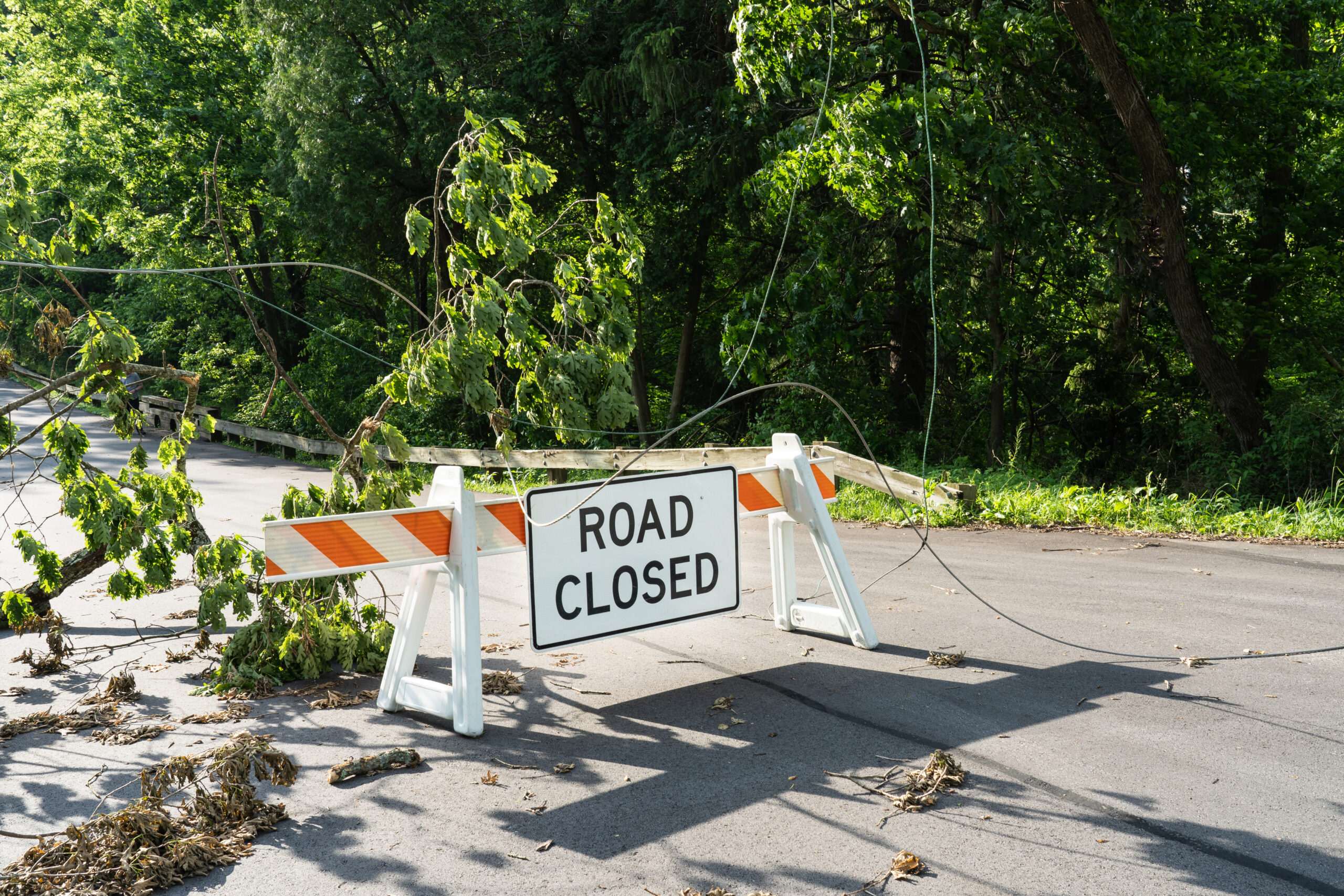
Downed power lines pose a significant hazard to public safety, and it is of utmost importance to keep a safe distance from them. The primary risk is electrocution, which can cause severe injury or death. Even when a power line is down, it can still carry an electrical current, which poses a threat to nearby objects and people. In addition to electrocution, downed power lines can cause fires, explosions, and other hazards. The voltage running through power lines can range from hundreds to thousands of volts, making them a lethal hazard if precautions are not taken.
If You See a Downed Power Line:
- Keep a distance of at least 30 feet away from any downed power line and objects it may be touching, such as trees or fences.
- Always assume it is energized, even if it’s not sparking or making noise.
- Do not touch the power line, anyone, or anything it may be in contact with, including vehicles, equipment, fallen tree limbs, or water.
- Warn others to stay away from the area and keep pets and children away from the downed power line.
- Call 911 or your local utility company immediately.
- Do not attempt to move or cut anything that is in contact with a downed power line.
If You Are in Your Vehicle:
- On the road, if you see a downed power line avoid driving over it.
- If you are in a vehicle that comes into contact with a downed power line, do not leave the car: stay inside the vehicle and call for help. Don’t touch any part of the metal frame of the car, even inside the vehicle, as the frame may be energized!
- If someone approaches the car, warn them to stop and keep away.
Remember:
- Always follow the instructions of utility company workers and first responders in the area. They are trained to handle downed power lines safely.
- By following these safety guidelines, you can help prevent accidents and ensure the safety of yourself and others near downed power lines.
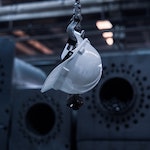
Working Around Moving Equipment
Did you know that 75% of construction related “struck by” and “run over” fatalities involve heavy equipment?
Working with or around heavy and moving equipment presents challenges and a series of constant responsibilities. Injuries or deaths may result when individuals are not alert, walk or move under suspended loads, or do not maintain adequate distance from the equipment and its operator. To reduce the risk of injury or death, it is important to follow safety guidelines.
While on a bike or working as a pedestrian in a plant, an individual should:
- Stay alert and defensive
- Assume you do not have the right of way
- Know and avoid a crane’s swing radius
- Avoid the equipment operator’s blind spots
- Assume equipment operators do not see you
- Make eye contact with the equipment operator
- Do not walk/ride under a suspended load
- Obey traffic rules and patterns
- Keep a safe distance
Engineers and those working onsite can become accustomed to working with heavy, moving equipment.
It is crucial not to become complacent and to follow necessary guidelines or tips to reduce risk of injury and death.
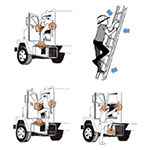
3-Point Shot Defeats Slips, Trips, and Falls
Slips, trips, and falls (STFs) account for 20% of all work-related injuries every year. Many of these injuries occur when a worker climbs, or jumps, in or out of heavy equipment, trucks, or trailers. Falls from portable ladders and slips on stairways are also included in these incident numbers. Inclement weather, poor housekeeping, defective equipment, rushing to get the job done, and lack of hand supports all increase the chances for injury. Most of these incidents result in injuries to shoulders, arms, backs, and ankles.
3 Point Rule:
Count on the “3-point rule” to greatly reduce your chances for injury when entering or exiting a vehicle, climbing a ladder, or using the stairs.
- The “3-point rule” states that you should have 3 of the 4 critical points of your body (2 hands and 2 feet) in contact at all times when entering and/or exiting a vehicle. This will provide maximum stability and support and maintains balance to reduce the chances for slips and falls.
- Always follow the “3-point rule” (2 hands and a foot or 2 feet and a hand) when climbing ladders. Keep your body near the middle of the step. Always face the ladder when climbing and keep your shoulders between the rails.
- When using stairways always use the handrail for support and to maintain the “3-point rule.”
Be a Winner! The “3-point rule” provides the winner’s edge to defeat STFs – every time!

Personal Lightning Safety Tips
April showers bring May flowers, but safety is every month. It’s time for spring rain and that can bring thunderstorms and lightning. Know what to do when severe weather hits your workplace and at home.
1. PLAN in advance your evacuation and safety measures. When you first see lightning or hear thunder, activate your emergency plan. Now is the time to go to a building or a vehicle. Lightning often precedes rain, so don’t wait for the rain to begin before suspending activities.
2. IF OUTDOORS…Avoid water. Avoid the high ground. Avoid open spaces. Avoid all metal objects including electric wires, fences, machinery, motors, power tools, etc. Unsafe places include underneath canopies, small picnic or rain shelters, or near trees. Where possible, find shelter in a substantial building or in a fully enclosed metal vehicle such as a car, truck or a van with the windows completely shut.
If lightning is striking nearby when you are outside, you should:
- A. Crouch down. Put feet together. Place hands over ears to minimize hearing damage from thunder.
- B. Avoid proximity (minimum of 15 ft.) to other people.
3. IF INDOORS… Avoid water. Stay away from doors and windows. Do not use the telephone. Take off headsets. Turn off, unplug, and stay away from appliances, computers, power tools, & TV sets. Lightning may strike exterior electric and phone lines, inducing shocks to inside equipment.
4. SUSPEND ACTIVITIES for 30 minutes after the last observed lightning or thunder.
5. INJURED PERSONS do not carry an electrical charge and can be handled safely. Apply First Aid procedures to a lightning victim if you are qualified to do so. Call 911 or send for help immediately.
6. KNOW YOUR EMERGENCY TELEPHONE NUMBERS.
Teach this safety slogan: “If you can see it, flee it; if you can hear it, clear it.”
Prepared by the National Lightning Safety Institute, Louisville, CO.

Trenching and Excavation Safety
Two workers are killed every month in trench collapses. The employer must provide a workplace free of recognized hazards that may cause serious injury or death. The employer must comply with the trenching and excavation requirements of 29 CFR 1926.651 and 1926.652 or comparable OSHA-approved state plan requirements.
An excavation is any man-made cut, cavity, trench, or depression in an earth surface formed by earth removal.
Trench (Trench excavation) means a narrow excavation (in relation to its length) made below the surface of the ground. In general, the depth is greater than the width, but the width of a trench (measured at the bottom) is not greater than 15 feet (4.6 meters).
For more information from OSHA on how to stay safe in a trench, click HERE.
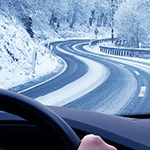
The Importance of Driving Safely
An average of 119 persons died each day in motor vehicle crashes — one every 12 minutes. Motor vehicle crashes are the leading cause of death for every age from 3 through 33. As we move about from home to work, or work to jobsite, or jobsite to jobsite; here are a few tips for safe winter driving according to OSHA.gov
Winter Driving
Although employers cannot control roadway conditions, they can promote safe driving behavior by ensuring workers: recognize the hazards of winter weather driving, for example, driving on snow/ice covered roads; are properly trained for driving in winter weather conditions; and are licensed (as applicable) for the vehicles they operate.
Employers should set and enforce driver safety policies. Employers should also implement an effective maintenance program for all vehicles and mechanized equipment that workers are required to operate. Crashes can be avoided.
Employers should ensure properly trained workers inspect the following vehicle systems to determine if they are working properly:
- Brakes: Brakes should provide even and balanced braking. Also check that brake fluid is at the proper level.
- Cooling System: Ensure a proper mixture of 50/50 antifreeze and water in the cooling system at the proper level.
- Electrical System: Check the ignition system and make sure that the battery is fully charged and that the connections are clean. Check that the alternator belt is in good condition with proper tension.
- Engine: Inspect all engine systems.
- Exhaust System: Check exhaust for leaks and that all clamps and hangers are snug.
- Tires: Check for proper tread depth and no signs of damage or uneven wear. Check for proper tire inflation.
- Oil: Check that oil is at proper level.
- Visibility Systems: Inspect all exterior lights, defrosters (windshield and rear window), and wipers. Install winter windshield wipers.
An emergency kit with the following items is recommended in vehicles:
- Cellphone or two-way radio
- Windshield ice scraper
- Snow brush
- Flashlight with extra batteries
- Shovel
- Tow chain
- Traction aids (bag of sand or cat litter)
- Emergency flares
- Jumper cables
- Snacks
- Water
- Road maps
- Blankets, change of clothes
Stranded in a Vehicle
If you are stranded in a vehicle, stay in the vehicle. Call for emergency assistance if needed, response time may be slow in severe winter weather conditions. Notify your supervisor of your situation. Do not leave the vehicle to search for assistance unless help is visible within 100 yards. You may become disoriented and get lost in blowing and drifting snow. Display a trouble sign by hanging a brightly colored cloth on the vehicle’s radio antenna and raising the hood. Turn on the vehicle’s engine for about 10 minutes each hour and run the heat to keep warm. Also, turn on the vehicle’s dome light when the vehicle is running as an additional signal. Beware of carbon monoxide poisoning. Keep the exhaust pipe clear of snow, and open a downwind window slightly for ventilation.
Watch for signs of frostbite and hypothermia. Do minor exercises to maintain good blood circulation in your body. Clap hands and move arms and legs occasionally. Try not to stay in one position for too long. Stay awake, you will be less vulnerable to cold-related health problems. Use blankets, newspapers, maps, and even the removable car mats for added insulation. Avoid overexertion since cold weather puts an added strain on the heart. Unaccustomed exercise such as shoveling snow or pushing a vehicle can bring on a heart attack or make other medical conditions worse
For information about driving safely during the winter, visit OSHA’s Safe Winter Driving page.
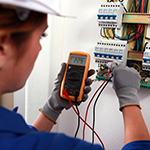
21 Safety Rules for Working with Electrical Equipment
There are many hazards when working on a job site, especially when it’s under construction. It is always important to follow safe working practices and use proper safety equipment, especially when working with and handling electrical equipment.
According to the EEP – Electrical Engineers Portal, there are 21 safety rules for working with electrical equipment.
Rule no. 1 – Avoid contact with energized electrical circuits.
Rule no. 2 – Treat all electrical devices as if they are live or energized.
Rule no. 3 – Disconnect the power source before servicing or repairing electrical equipment.
Rule no. 4 – Use only tools and equipment with non-conducting handles when working on electrical devices.
Rule no. 5 – Never use metallic pencils or rulers, or wear rings or metal watchbands when working with electrical equipment.
Rule no. 6 – When it is necessary to handle equipment that is plugged in, be sure hands are dry and, when possible, wear nonconductive gloves, protective clothes and shoes with insulated soles.
Rule no. 7 – If it is safe to do so, work with only one hand, keeping the other hand at your side or in your pocket, away from all conductive material.
Rule no. 8 – Minimize the use of electrical equipment in cold rooms or other areas where condensation is likely.
Rule no. 9 – If water or a chemical is spilled onto equipment, shut off power at the main switch or circuit breaker and unplug the equipment.
Rule no. 10 – If an individual comes in contact with a live electrical conductor, do not touch the equipment, cord or person. Disconnect the power source from the circuit breaker or pull out the plug using a leather belt.
Rule no. 11 – Equipment producing a “tingle” should be disconnected and reported promptly for repair.
Rule no. 12 – Do not rely on grounding to mask a defective circuit nor attempt to correct a fault by insertion of another fuse or breaker, particularly one of larger capacity.
Rule no. 13 – Drain capacitors before working near them and keep the short circuit on the terminals during the work to prevent electrical shock.
Rule no. 14 – Never touch another person’s equipment or electrical control devices unless instructed to do so.
Rule no. 15 – Enclose all electric contacts and conductors so that no one can accidentally come into contact with them.
Rule no. 16 – Never handle electrical equipment when hands, feet, or body are wet or perspiring, or when standing on a wet floor.
Rule no. 17 – When it is necessary to touch electrical equipment (for example, when checking for overheated motors), use the back of the hand. Thus, if accidental shock were to cause muscular contraction, you would not “freeze” to the conductor.
Rule no. 18 – Do not store highly flammable liquids near electrical equipment.
Rule no. 19 – Be aware that interlocks on equipment disconnect the high voltage source when a cabinet door is open but power for control circuits may remain on.
Rule no. 20 – De-energize open experimental circuits and equipment to be left unattended.
Rule no. 21 – Do not wear loose clothing or ties near electrical equipment.
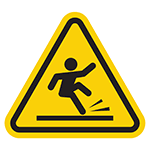
Slip, Trip & Fall Prevention
Protect Against the Third Leading Cause of Workplace Death
Slips, trips, and falls are a major cause of preventable injuries and deaths in the workplace; only motor vehicle incidents and drug overdoses cause more worker fatalities according to the National Safety Council.
Slips trips and falls happen everywhere – in retail stores, government offices, schools, manufacturing facilities, corporate offices and at home.
Here are some tips to prevent falls in the workplace.
- Clean up all spills immediately
- Stay off freshly mopped floors
- Secure electrical and phone cords out of traffic areas
- Remove small throw rugs or use non-skid mats to keep them from slipping
- Keep frequently used items in easily reachable areas
- Wear shoes with good support and slip-resistant soles
- Arrange furniture to provide open walking pathways
- Keep drawers and cabinet doors closed at all times
- Install handrails on all staircases on both sides
- Remove tripping hazards (paper, boxes, books, clothes, toys, shoes) from stairs and walkways
- Ensure adequate lighting both indoors and outdoors
- Remove debris from exterior walkways
- Periodically check the condition of walkways and steps, and repair damages immediately
- Never stand on a chair, table or other surface on wheels
Most accidents are preventable. Take the time to be safe in the workplace.
Use proper equipment and train others on safety prevention methods. Your coworkers, friends and family will thank you.
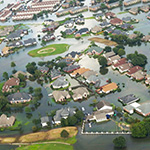
US Department of Labor Warns on Flood Water Cleanup
Hurricane Harvey brought catastrophic flooding to Texas and Louisiana last week, but it also brought heroic reactions from first responders and volunteers. As the flood waters recede, thousands of Americans are beginning the difficult work of cleanup and recovery.
If you’re cleaning up flood damage, check out our tips on staying safe. And remember: Most of these are general guidelines. But some operations – such as utility restoration, hazardous material cleanup, and search and rescue – should only be conducted by workers who have been properly trained.
Remember to:
- Stay Out of Flood Waters
- Avoid Electrical Hazards
- Safely Remove Debris
- Breathe Easy
- Keep Your Cool
- Avoid Wild Animals
Read details here: https://blog.dol.gov/2017/09/06/cleaning-staying-safe
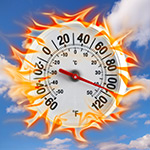
Keep Safe in the Summer Heat!
Working in hot weather can be dangerous. The U.S. Department of Labor and OSHA remind employers and workers to stay safe before a heatwave begins.
Remember: Water. Rest. Shade. OSHA recommends frequent breaks in a cool or shady environment, and drinking water every 15 minutes. OSHA also urges employers to allow new workers to acclimate and build up resistance to the increased temperatures. A recent study of heat-related workplace fatalities found that most occurred during the worker’s first week on the job. For more information on heat illness and prevention, visit https://www.osha.gov/heat/

July is Skin Cancer Awareness Month
Skin cancer is one of the most common forms of cancer in the United States; it’s also one of the most preventable forms of cancer and highly treatable when detected early. When working in the field, proper sun protection is importation. Remember to wear sunscreen. To learn more about safe sun exposure, visit the Skin Cancer Foundation.
